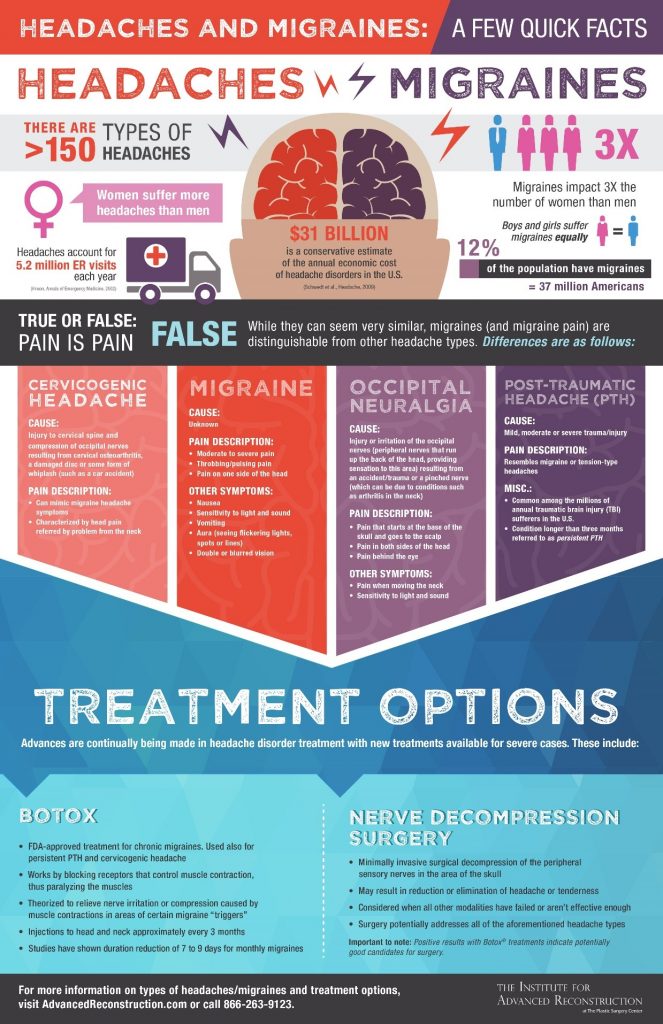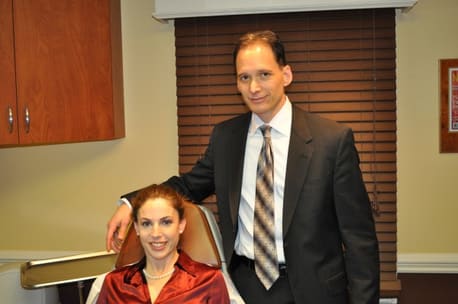June is National Migraine and Headache Awareness Month | IFAR
June is National Migraine and Headache Awareness month. Headaches and migraines affect the daily lives of millions of people all over the world. This intense pressure in the head can have many causes, and it is important to understand the difference between headaches and migraines so you can properly navigate the treatment options that may be available.
The Infographic below provides facts and details of procedures to potentially aid those who suffer from various types of headaches:

Headaches Facts
There are over 150 types of headaches.
Women suffer more headaches than men.
Headaches account for 5.2 million emergency room visits each year.
Migraines Facts
Migraines impact 3 times the number of women than men.
Among children, boys and girls suffer migraines equally.
37 million Americans (or 12 percent of the population) have migraines.
Overall Headache Disorders
$31 billion is a conservative estimate of the annual economic cost of headache disorders in the U.S.
True or False: Pain Is Pain
False. While they can seem very similar, migraines (and migraine pain) are distinguishable from other headache types. Differences are as follows:
Migraine
- Cause:
- Unknown
- Pain Description:
- Moderate to severe pain
- Throbbing/pulsing pain
- Pain on one side of the head
- Other symptoms:
- Nausea
- Sensitivity to light and sound
- Vomiting
- Aura (seeing flickering lights, spots or lines)
- Double or blurred vision
Occipital Neuralgia
- Cause:
- Injury or irritation of the occipital nerves (peripheral nerves that run up the back of the head, providing sensation to this area), resulting from an accident/trauma or a pinched nerve (which can be due to conditions such as arthritis in the neck)
- Pain Description:
- Pain that starts at the base of the skull and goes to the scalp
- Pain in both sides of the head
- Pain behind the eye
- Other symptoms:
- Pain when moving the neck
- Sensitivity to light and sound
Post-Traumatic Headache (PTH)
- Cause:
- Mild, moderate or severe trauma/injury
- Pain description:
- Resembles migraine or tension-type headaches
- Misc.:
- Common among the 1.7 million annual traumatic brain injury (TBI) sufferers in the U.S.
- Condition longer than three months referred to as persistent PTH
Cervicogenic Headache
- Cause:
- Injury to the cervical spine and compression of occipital nerves resulting from cervical osteoarthritis, a damaged disc or some form of whiplash (such as a car accident)
- Pain Description:
- Can mimic migraine headache symptoms
- Characterized by head pain referred by problems from the neck
Treatment Options
Advances are continually being made in headache disorder treatment, with new treatments available for severe cases. These include:
Botox
- FDA-approved treatment for chronic migraines. Used also for persistent PTH and cervicogenic headache
- Works by blocking receptors that control muscle contraction, thus paralyzing the muscles
- Theorized to relieve nerve irritation or compression caused by muscle contractions in areas of certain migraine “triggers”
- Injections to the head and neck approximately every 3 months
- Studies have shown a duration reduction of 7 to 9 days for monthly migraines
Nerve Decompression Surgery
- Minimally invasive surgical decompression of the peripheral sensory nerves in the area of the skull
- May result in the reduction or elimination of headache or tenderness
- Considered when all other modalities have failed or aren’t effective enough
- Surgery potentially addresses all of the aforementioned headache types
Important to note: Positive results with Botox® treatments indicate potentially good candidates for surgery.




